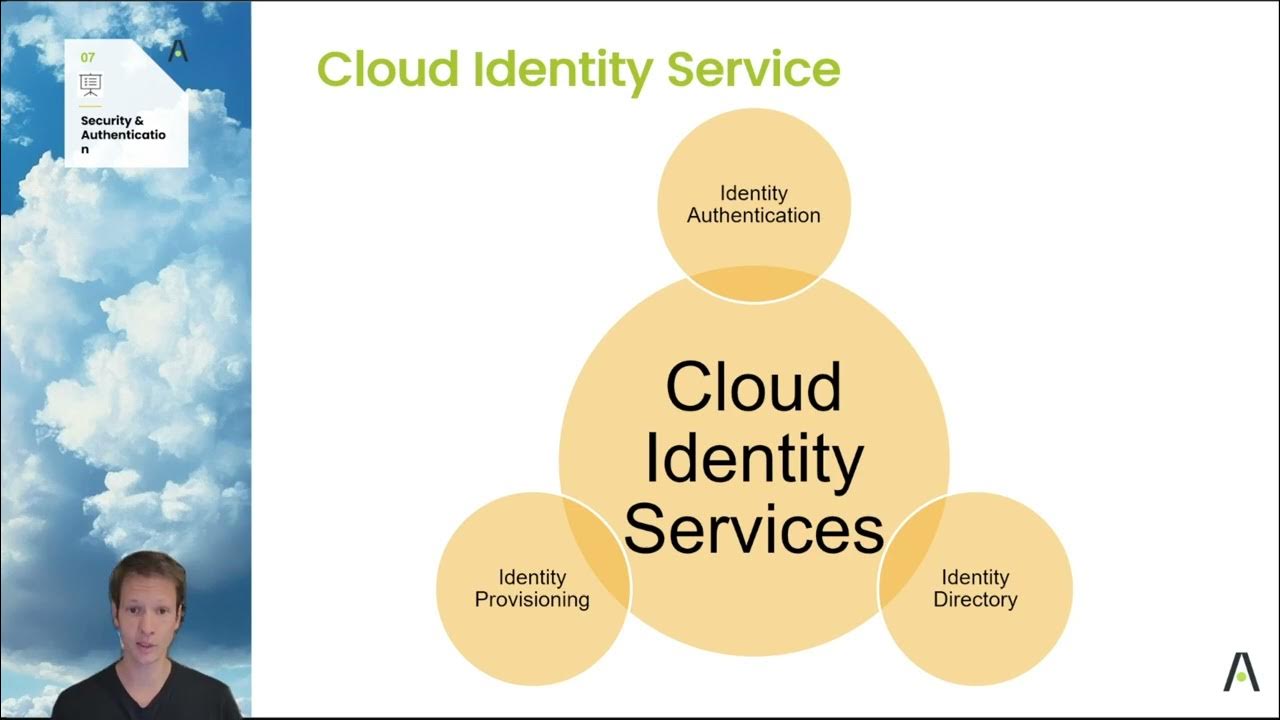Episode 32: Cloud Identity Services - Strategies
Summary
TLDRIn this video, the speaker discusses cloud identity service strategies and whether it's necessary to have one or more services for different environments. The recommendation is to have at least two services—one for production and another for non-production. The benefits of separating environments include added security, easier user group management, and improved system transportability. The speaker explains how separating cloud identity services for different environments, like development, acceptance, and production, can reduce security risks, prevent large JWT tokens, and simplify long-term maintenance. While not an official recommendation, it encourages viewers to consider this approach for better management.
Takeaways
- 😀 Having at least one cloud identity service is recommended for security and management purposes.
- 😀 Two cloud identity services, one for production and one for non-production, are the minimum recommendation for proper environment separation.
- 😀 Using separate cloud identity services for each environment (development, acceptance, production) adds an additional layer of security.
- 😀 Multiple cloud identity services for different environments can help prevent accidental user access across systems due to misconfigured authorizations.
- 😀 Different cloud identity services for development, acceptance, and production allow for clearer system isolation and management.
- 😀 It is beneficial to use the same user group names across different environments for easier role mapping and user group management in BTP.
- 😀 By separating environments with different cloud identity services, you ensure smaller, environment-specific JWT tokens, reducing the risk of token size limitations.
- 😀 A smaller header size in JWT tokens is crucial to avoid encountering issues with overly large headers when transferring roles and user group information.
- 😀 While the multi-cloud identity approach requires extra configuration initially, it simplifies long-term maintenance with clean separations of environments.
- 😀 The multi-cloud identity approach is not a formal recommendation from SAP, but it is an idea worth considering for specific use cases based on system architecture and security needs.
Q & A
What is the main topic of the video?
-The main topic of the video is about cloud identity service strategies, specifically discussing the need for cloud identity services in different environments like development, production, and acceptance.
How many cloud identity services does the speaker recommend for different environments?
-The speaker recommends having at least two cloud identity services: one for production and one for non-production environments. The minimum recommendation is to have two: one for development and one for production.
Why does the speaker recommend separate cloud identity services for different environments?
-The speaker recommends separate cloud identity services for different environments to ensure better security, avoid mistakes in user access, and make the role mappings more manageable between environments.
What would happen if you use only one cloud identity service for all environments?
-Using only one cloud identity service for all environments could lead to security risks, as users might have access to all systems connected to that service. Even with proper authorizations, a mistake could cause unintended access.
What additional layer of security does using multiple cloud identity services provide?
-Using multiple cloud identity services ensures that users from one environment (e.g., development) cannot have access to other environments (e.g., production), providing an extra layer of security by limiting access strictly to the relevant environment.
How does separating cloud identity services help with role mapping in BTP?
-By separating cloud identity services, you can use the same user group names across different environments. This consistency allows for easier transport of role collections in BTP, as the user group names and role mappings remain the same in each environment.
What is the role of the 'jot token' in the cloud identity service strategy?
-The 'jot token' contains the user group information. With separate cloud identity services for each environment, the jot token will only include the user groups specific to that environment, preventing the token from becoming too large and helping avoid issues with token size limitations.
What issue does separating cloud identity services help resolve related to 'jot token'?
-Separating cloud identity services helps resolve the issue where the jot token could become too large if it included user groups from multiple environments. This would cause limitations and potential errors due to the token's size.
Is the use of separate cloud identity services recommended by SAP?
-No, the use of separate cloud identity services is not officially recommended by SAP and is not mentioned in SAP's guidelines. The idea came from brainstorming and is presented as a potential strategy for improved security and ease of maintenance.
What is the speaker's final message about the cloud identity service strategy?
-The speaker encourages the audience to consider and think about the strategy of using multiple cloud identity services for different environments, although it is not an official recommendation. They invite feedback and opinions from the viewers.
Outlines

Dieser Bereich ist nur für Premium-Benutzer verfügbar. Bitte führen Sie ein Upgrade durch, um auf diesen Abschnitt zuzugreifen.
Upgrade durchführenMindmap

Dieser Bereich ist nur für Premium-Benutzer verfügbar. Bitte führen Sie ein Upgrade durch, um auf diesen Abschnitt zuzugreifen.
Upgrade durchführenKeywords

Dieser Bereich ist nur für Premium-Benutzer verfügbar. Bitte führen Sie ein Upgrade durch, um auf diesen Abschnitt zuzugreifen.
Upgrade durchführenHighlights

Dieser Bereich ist nur für Premium-Benutzer verfügbar. Bitte führen Sie ein Upgrade durch, um auf diesen Abschnitt zuzugreifen.
Upgrade durchführenTranscripts

Dieser Bereich ist nur für Premium-Benutzer verfügbar. Bitte führen Sie ein Upgrade durch, um auf diesen Abschnitt zuzugreifen.
Upgrade durchführenWeitere ähnliche Videos ansehen

Episode 31: Cloud Identity Services - Identity Directory Service

Episode 29: Cloud Identity Services Introduction

20 Identidade, acesso e segurança - Parte 1

5 Cloud Skills That Will Become Useless by 2026

Episode 30: Cloud Identity Services - Identity Authentication Service

Cancelé todos los Servicios de Streaming para probar un punto
5.0 / 5 (0 votes)
